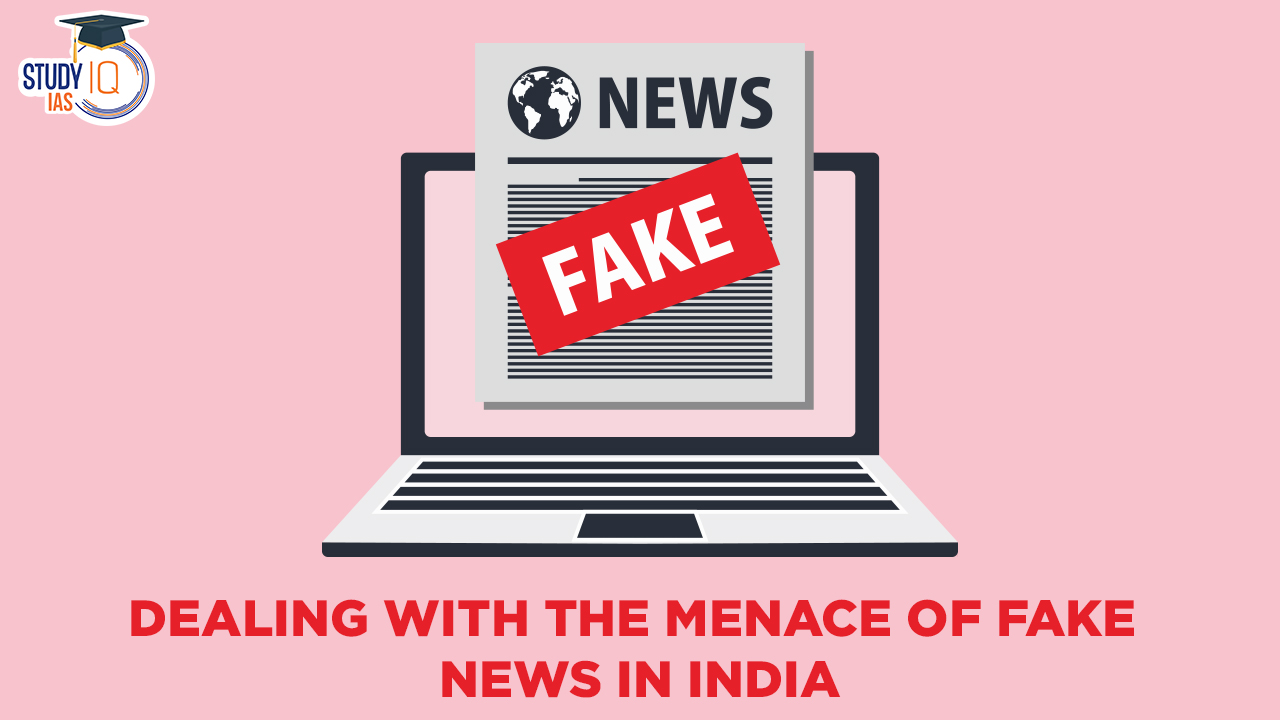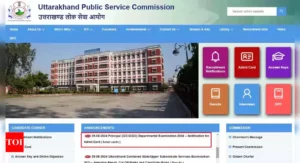Table of Contents
Context: Karnataka will soon constitute an oversight panel to curb fake news and the menace of misinformation campaigns, particularly those disseminated through social media platforms.
Understanding Fake News
- Fake news refers to false or misleading information, often spread through various media channels such as social media, websites, news outlets, or other communication platforms.
- Fake news can take on various forms and serve different purposes (see the image).

Key Concerns with the Fake News
- Surge in Fake News: India recorded a massive 214 percent rise in cases related to misinformation and rumours in 2020, a three-fold rise over 2019, according to the latest National Crime Records Bureau (NCRB) data.
- Incites Violence: The proliferation of fake news, often spread through social media, has led to a rise in communal violence.
- For example, sharing a fake image and passing it off as one from West Bengal’s North 24 Parganas led to communal violence in 2017.
- Polarization and Division: Fake news often exploits existing divisions and reinforces people’s preconceived beliefs and biases. It can exacerbate social and political polarization, making it harder for people to find common ground and work together.
- Misused by Extremist Groups: Extremist and anti-social organizations use fake news for propaganda, radicalization, and destabilizing societies.
- Recently, the Ministry of Information & Broadcasting blocked 35 YouTube news channels and 2 websites for spreading anti-India fake news.
- Harming Reputations: Fake campaigns are used to damage organizations’ reputations and manipulate stock markets.
- For example, the ‘Arctic Ready’ hoax targeting Shell in 2012.
- Impact on Democracy: False information can manipulate public opinion, influence elections, and undermine the integrity of the democratic system.
Efforts by the Government to Tackle Fake News
- IT Amendment Rules, 2023: In April 2023, the Ministry of Electronics and IT notified amendments to the Information Technology Rules, 2021. Key provisions related to fake news include:
- Appointment of Fact-check Unit: The Central Government will allow a fact-check body appointed by it to label online content related to the Union Government as “fake” or “misleading”.
- Removal of Fake Content: If any piece of information is marked as fake by the fact check unit, online intermediaries will be required to take it down. Internet service providers will have to block URLs of such content.
- If online intermediaries fail to remove such content, they would risk losing their safe harbour, which protects them from litigation against third-party content.
- Efforts to Reduce Fake Content: Online intermediaries and internet service providers should make “reasonable efforts” to not host content related to the Central Government that is “identified as fake or misleading” by the fact check unit.
- Section 505 of the IPC: This section deals with making statements conducing to public mischief, addressing fake news that incites fear or alarm.
- Section 505 (1) of the IPC: This section criminalizes spreading fake news with the intent to incite hatred or provoke violence between different groups.
- The Digital Personal Data Protection Bill 2023 (which has not been implemented yet) has provisions to curb the misuse of individuals’ data on online platforms.
- Section 54 of the Disaster Management Act, 2005: This section punishes those who circulate fake news or warnings about disasters leading to public panic.
- Delhi Declaration of United Nations Security Council (UNSC) Counter-Terrorism Committee (CTC): India flagged concerns over increased use of cyberspace and other Information Communication Technologies (ICT), including social media.
Challenges in Countering Fake News
- Volume and Speed: The internet and social media platforms allow fake news to spread rapidly and reach a vast audience within minutes. The sheer volume of information makes it challenging to monitor and address every instance of fake news in real-time.
- Technological Advancements: Advancements in technology, such as deepfake videos and AI-generated content, make it increasingly difficult to distinguish between real and fake information.
- Lack of Media Literacy: Many people lack the skills to critically evaluate the information they encounter online.
- Recent data reveals that only 38% of households in India can be classified as digitally literate.
- Anonymity and Pseudonymity: Many purveyors of fake news remain anonymous or use pseudonyms, making it difficult to identify and hold them accountable for spreading false information.
- Legal and Ethical Dilemmas: Balancing the need to combat fake news with protecting free speech rights can be a complex legal and ethical challenge.
- First-Mover Advantage: Fake news creators often have a “first-mover advantage.” Once false information is out there, even if later debunked, it can still influence opinions and behaviors.
Way Forward
- Collaboration Among Stakeholders: Governments, businesses, and civil society should work together to utilize new technologies for the greater good.
- Media Ethics: Promote ethical journalism practices, including fact-checking and responsible reporting.
- Implementing Targeted Laws: Governments can consider specific laws to tackle misinformation in areas like health and elections.
- Promoting Media Literacy: Promote media literacy programs to educate people on how to critically evaluate information sources and identify fake news.
- Public Awareness Campaigns: Launch campaigns to raise awareness about the dangers of fake news and how to spot it.
- Balancing Freedom of Speech: Establish transparent criteria for addressing fake news, ensuring measures are proportionate to the problem while protecting freedom of speech.


 IB ACIO Salary 2025, In-Hand Salary, All...
IB ACIO Salary 2025, In-Hand Salary, All...
 UKPSC Lower PCS Recruitment 2024: Exam D...
UKPSC Lower PCS Recruitment 2024: Exam D...
 India’s First Full-Stack Quantum Compu...
India’s First Full-Stack Quantum Compu...





















